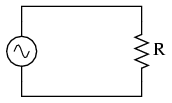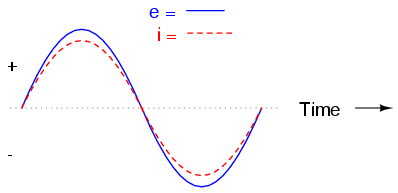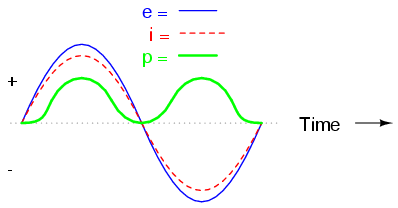AC resistor circuits

If we were to plot the current and voltage
for a very simple AC circuit consisting of a source and a
resistor, it would look something like this:

Because the resistor simply and directly
resists the flow of electrons at all periods of time, the
waveform for the voltage drop across the resistor is exactly
in phase with the waveform for the current through it. We
can look at any point in time along the horizontal axis of
the plot and compare those values of current and voltage
with each other (any "snapshot" look at the values of a wave
are referred to as instantaneous values, meaning the
values at that instant in time). When the
instantaneous value for current is zero, the instantaneous
voltage across the resistor is also zero. Likewise, at the
moment in time where the current through the resistor is at
its positive peak, the voltage across the resistor is also
at its positive peak, and so on. At any given point in time
along the waves, Ohm's Law holds true for the instantaneous
values of voltage and current.
We can also calculate the power dissipated
by this resistor, and plot those values on the same graph:

Note that the power is never a negative
value. When the current is positive (above the line), the
voltage is also positive, resulting in a power (p=ie) of a
positive value. Conversely, when the current is negative
(below the line), the voltage is also negative, which
results in a positive value for power (a negative number
multiplied by a negative number equals a positive number).
This consistent "polarity" of power tells us that the
resistor is always dissipating power, taking it from the
source and releasing it in the form of heat energy. Whether
the current is positive or negative, a resistor still
dissipates energy. |